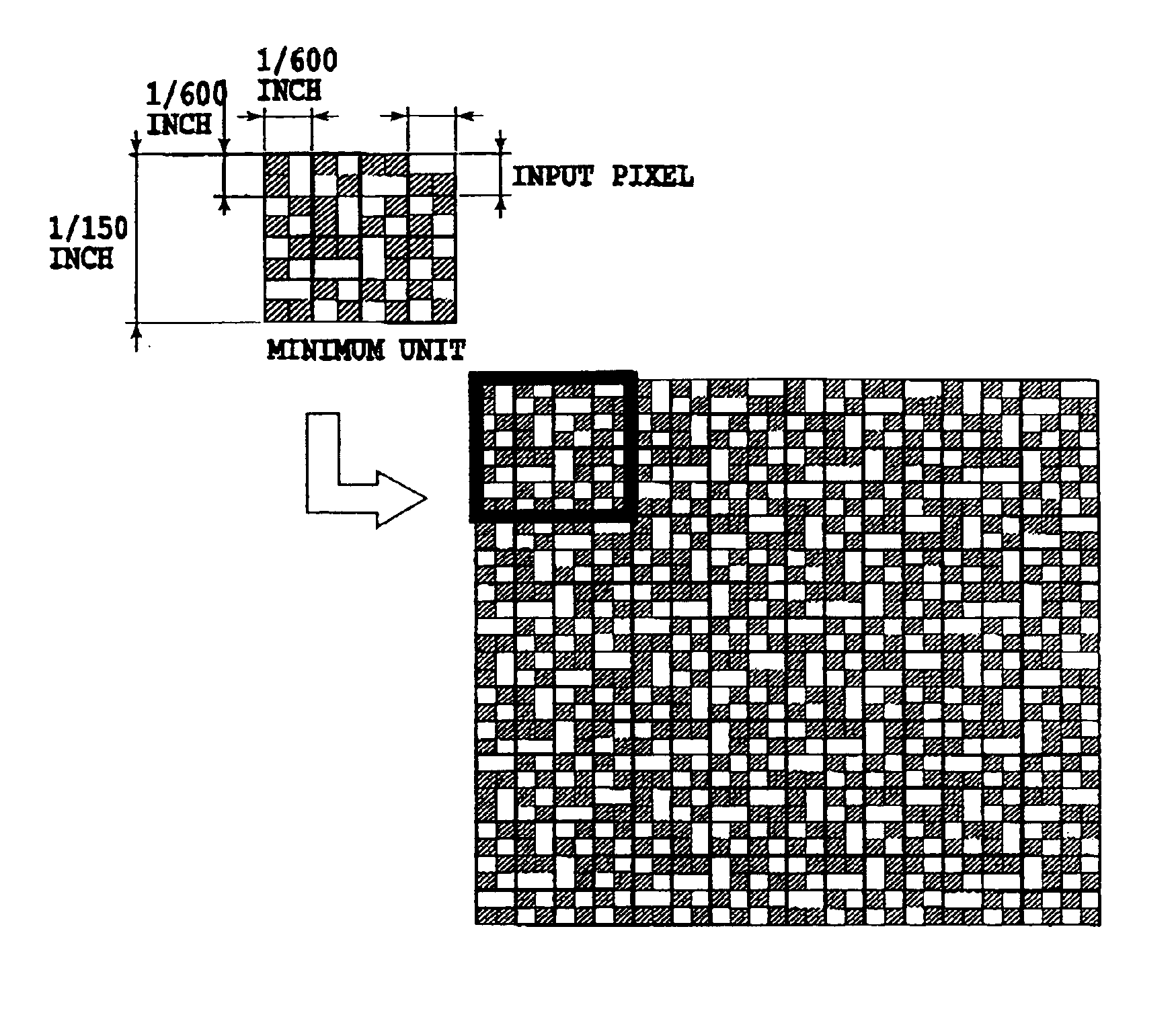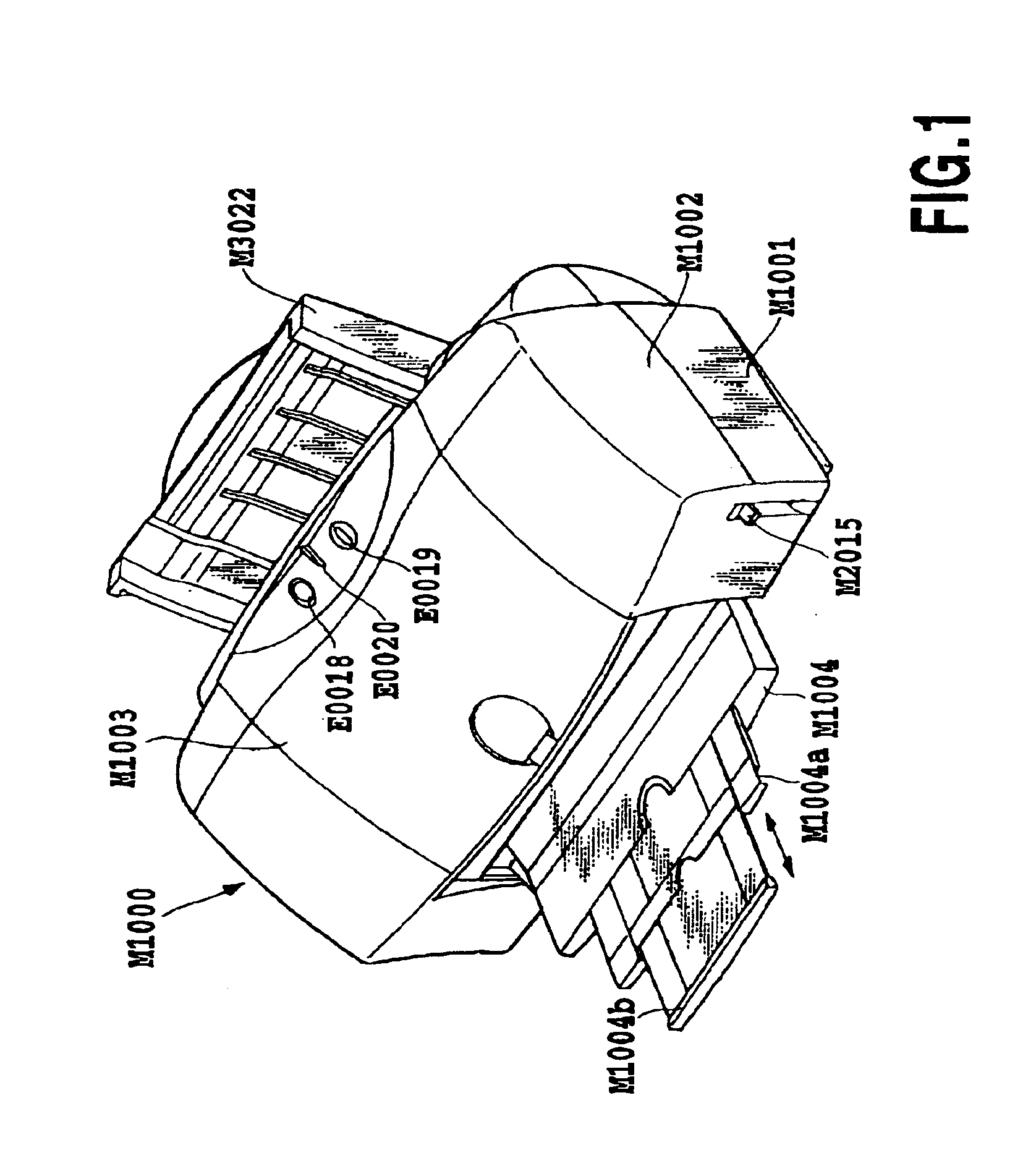Printing method, print unit, program for the same, and storage medium for the same
a printing method and print unit technology, applied in the direction of printing, electrical apparatus, visual presentation using printers, etc., can solve the problems of affecting image quality, deterioration of image quality, and inability to meet the needs of printing, so as to reduce the sense of noise in the image further, the effect of high spatial frequency characteristic and high image quality
- Summary
- Abstract
- Description
- Claims
- Application Information
AI Technical Summary
Benefits of technology
Problems solved by technology
Method used
Image
Examples
second embodiment
[0154]FIG. 13 is an explanatory diagram for an example of the composition of the matrix in this invention.
[0155]In this embodiment, as in the case of the embodiment described above, a matrix of (4×4) in which four dot patterns are arranged both in the main scanning direction (a horizontal direction in the figure) and the sub scanning direction (vertical direction in the figure) is created as a minimum unit, which is used repeatedly in the main scanning direction and in the sub scanning direction to conduct printing. Note that in this embodiment, as shown in FIG. 13, different dot patterns each displaying the same level of gradation are arranged in a different order for each raster along the main scanning direction in its minimum-unit matrix (a set of dot patterns).
[0156]FIG. 13 shows an example of the composition of the matrix for a level of gradation of “level 2.” In the matrix, four dot patterns A, B, C, and D each for “level 2” are arranged on each of the same raster, wherein an ...
third embodiment
[0157]FIG. 14 is an explanatory diagram of an example of the composition of the matrix in this invention.
[0158]In this embodiment, as in the case of the embodiment described above, a matrix of dot patterns (4×4) in which four dot patterns are arranged in the main scanning direction (horizontal direction in the figure) and in the sub scanning direction (vertical direction in the figure) is created as a minimum unit, which is used repeatedly in the main scanning direction and in the sub scanning direction to conduct printing. Note that in this embodiment, as shown in FIG. 14, different dot patterns with the same level of gradation are arrayed in a predetermined sequence in each raster along the main scanning direction in the minimum-unit matrix (a set of dot patterns). The arrangement sequence of dot patterns in this example is set in such a way that repetition sequences of the dot patterns in the raster direction are set identical for each raster and a starting position of the repeti...
PUM
 Login to View More
Login to View More Abstract
Description
Claims
Application Information
 Login to View More
Login to View More - R&D
- Intellectual Property
- Life Sciences
- Materials
- Tech Scout
- Unparalleled Data Quality
- Higher Quality Content
- 60% Fewer Hallucinations
Browse by: Latest US Patents, China's latest patents, Technical Efficacy Thesaurus, Application Domain, Technology Topic, Popular Technical Reports.
© 2025 PatSnap. All rights reserved.Legal|Privacy policy|Modern Slavery Act Transparency Statement|Sitemap|About US| Contact US: help@patsnap.com



